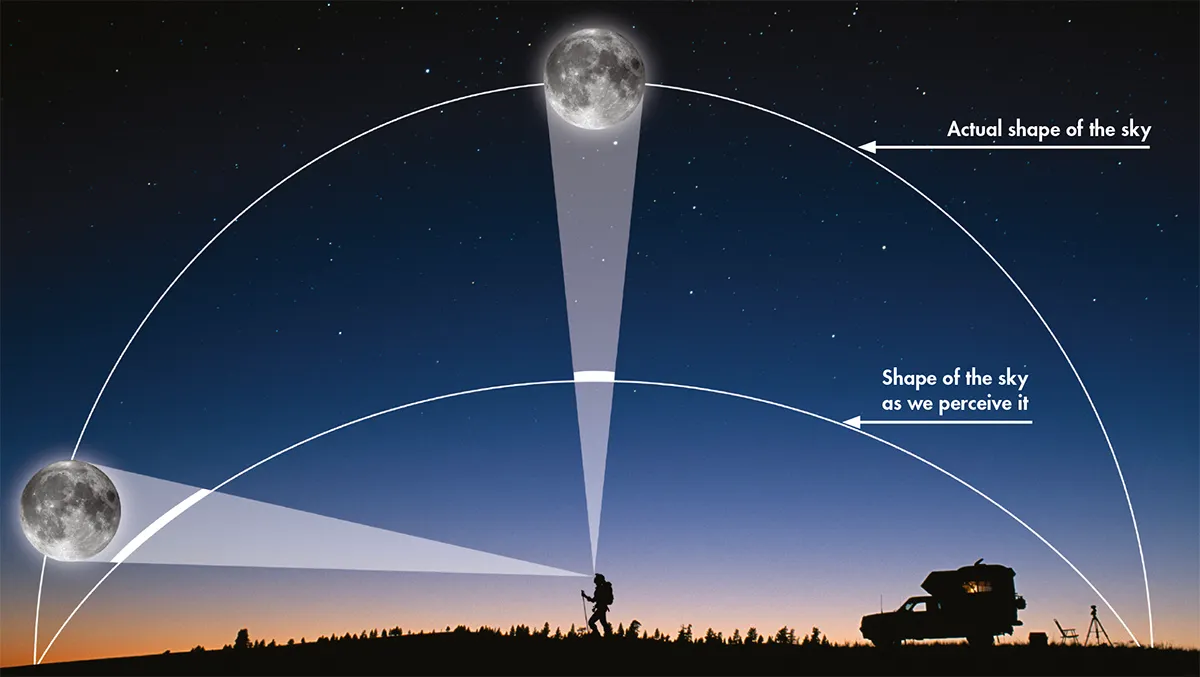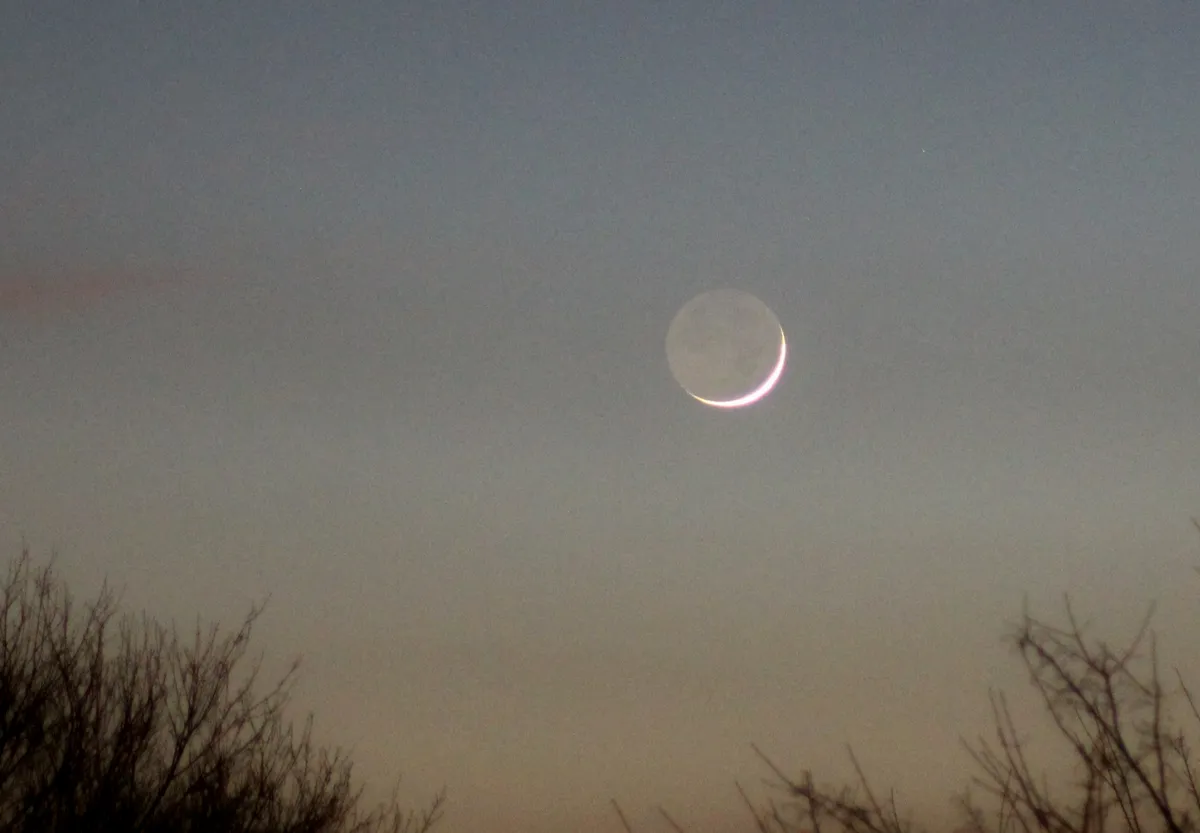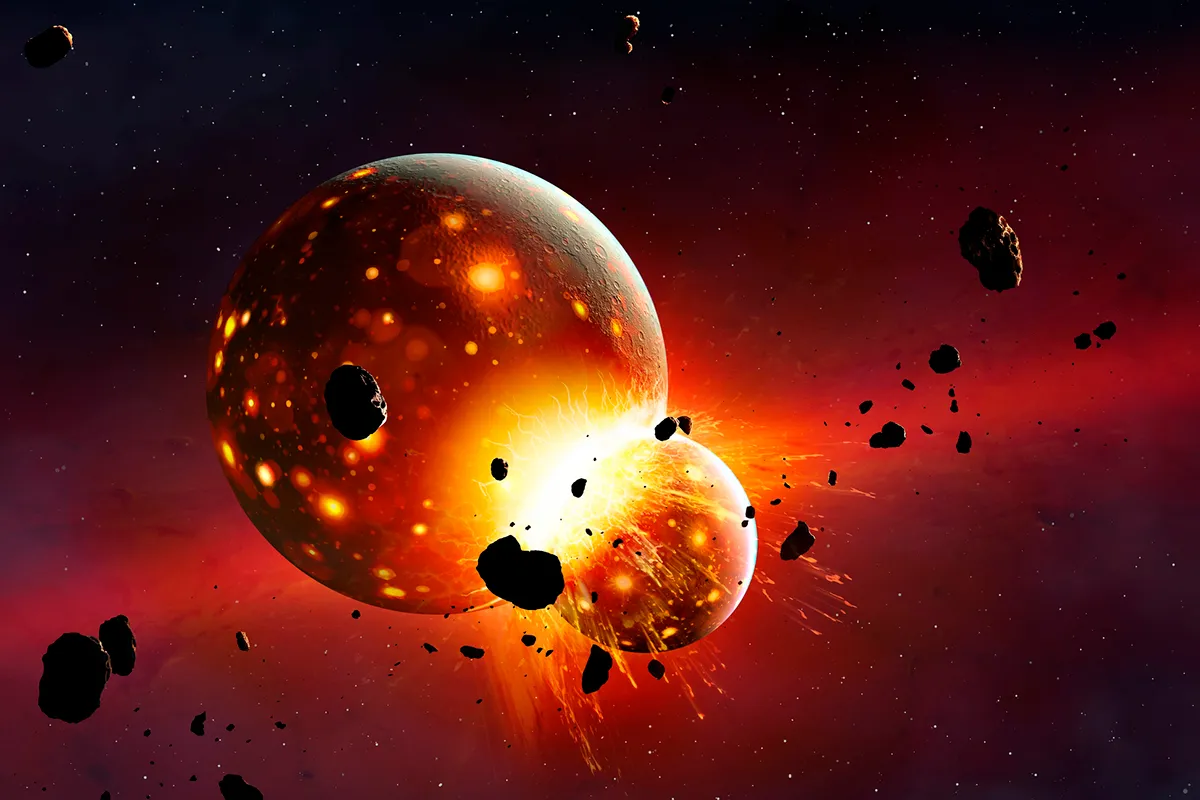The Moon is Earth’s only natural satellite and the brightest natural object we can see in the night sky.
Its appearance changes each night throughout the month, waxing and waning from new Moon to full Moon.
Even its distance changes: sometimes it’s close to Earth and other times further away.
Get weekly Moon phases delivered to your email inbox by signing up to receive the BBC Sky at Night Magazine e-newsletter.

As our ancestors studied the sky, the Moon became central to different cultures in their religious and spiritual practices, and many gave names to each full Moon.
When the Moon is at or near its closest orbital point to Earth, some call this a supermoon, and observing a supermoon is a great way of getting young astronomers and newcomers interested in the night sky.
If you're beginning your journey observing our Moon, or are already a seasoned lunar lover, here are 10 things you should know about our Moon.
Quick Moon facts
- Age: 4.5 billion years
- Diameter: 3,476km (2,159 miles)
- Equatorial circumference: 10,917km (6,783 miles)
- Surface temperature: 121°C to –133°C (250°F to –208°F)
- Average distance from Earth: 384,400km (238,855 miles)
- Rotation period: 29.5 Earth days
Orbit and phases

Sometimes the Moon is a thin crescent low in the sky and other times it’s full and bright. Some nights, it may not be visible at all.
These changes in appearance are known as the phases of the Moon and are caused by the elliptical orbit of the Moon and relative positions of the Moon, Earth and the Sun.
As the Moon completes its orbit around Earth approximately every 27 days, its changing position causes
the Sun to illuminate different regions of its surface.
This produces eight different phases: new Moon, waxing crescent, first quarter, waxing gibbous, full Moon, waning gibbous, last quarter and waning crescent.
When we see a full Moon, the Moon is on the opposite side of Earth to the Sun. When the Moon is between Earth and Sun, the nearside remains unlit and is a new Moon.
Find out when the next full Moon is visible and observe the changing phases yourself.
The Moon affects the tides

The Moon has a gravitational influence on Earth’s oceans and seas, creating the tides, and we experience two high tides and two low tides every day.
Different regions on Earth experience the varying strength of the Moon’s gravitational force as it orbits, causing our oceans and seas to bulge.
Depending on where the Moon is in its orbit, the point on Earth closest to the Moon feels the strongest gravitational pull and has high tides.
While at the point on the far side where the moon’s gravity is weaker, inertia wins and causes the bulge.
It sometimes appears huge

When any full Moon rises and sets on the horizon, it appears considerably larger due to the so-called ‘Moon illusion’.
Observing a full Moon rising and setting close to the eastern and western horizon is breathtaking, especially when the Moon is slightly closer to Earth, such as during a supermoon.
When the Moon is low in the sky, it appears enormous compared to when it’s higher in the sky.
However, the Moon illusion is just that: an illusion.
There is no definite explanation as to why the Moon appears larger, but it could be that when the Moon is full and close to the landscape, its apparent size compared to foreground buildings or trees makes it appear bigger.
You can prove this illusion by taking a photo of the Moon close to the horizon and, using the same camera settings, taking another when it’s high in the sky.
Compare the two images – you’ll see that both Moons are the same size.
Find out how the Moon's features compare to Earth's
Earth makes the Moon shine

Yes, it is sunlight reflecting off the lunar surface that produces the 'lit' portion of the Moon, but have you ever heard of Earthshine?
Earthshine is best seen just before and just after new Moon, when the Moon is a thin crescent.
The glow of earthshine is caused by sunlight reflecting off Earth, which softly lights up the unlit part of the Moon.
To understand earthshine, there are a few things to consider.
Earth is four times larger than the Moon and more reflective.
If you were to look at Earth from the Moon, you’d see Earth go through phases too.
And the Moon and Earth phases complement each other. When the full Moon is visible in the sky, Earth is in its new phase.
When the Moon is a thin crescent, Earth will be the opposite: its gibbous phase.
Just as the Moon begins to wane towards its new phase or starts to wax again, the Earth will be in its bright gibbous phase, reflecting light onto the Moon’s unlit area.
How the Moon formed

The Moon formed roughly 4.5 billion years ago, around 60–175 million years after the birth of our Solar System.
Many Moon formation theories abound, including that the Moon was a wandering asteroid-like object captured by Earth’s gravity, or was formed at the same time as Earth from the proto-planetary disc around our young Sun.
The most widely accepted theory is the giant impact theory.
This proposes that an almighty collision between a very young Earth and an object the size of Mars, called Theia, caused molten and vaporised debris to be ejected into space, creating a ring of debris around Earth that coalesced to form the Moon.
Studies of rocks brought back from the Apollo missions show the Moon and Earth share remarkable similarities in chemical composition, such as their oxygen-isotope makeup, supporting the giant impact theory.
What a blue Moon is

‘Once in a blue moon’ describes something that rarely happens, but in an astronomical sense there are two definitions: a ‘monthly’ blue Moon and a ‘seasonal’ blue Moon.
We might expect 12 full Moons over the year, one per calendar month.
But our 365-day calendar is around 11 days longer than the time it takes for the Moon to go through its 12 lunar cycles (each cycle lasting 29.5 days), so the two calendars don’t quite match.
We may therefore see 13 full Moons in a year, meaning two full Moons in one month.
The next monthly blue Moon will be on 31 May 2026.
A seasonal blue Moon is different. An astronomical season is based on Earth’s position in relation to the Sun, and begins and ends at the equinoxes and solstices.
In the Northern Hemisphere, astronomical summer is between summer solstice (20–22 June) and autumn equinox (22–23 September).
A seasonal blue Moon is a third full Moon in an astronomical season with four full Moons. Seasonal blue Moons occur every two to three years.
But is it blue? No, a ‘blue’ Moon is no more affected by atmospheric conditions than it is in any other month; its actual colour could be white, yellow, grey or orangy-red.
That depends on the molecules and dust particles the Moon’s light meets as it passes through our atmosphere and how it gets scattered, which is why the Moon sometimes looks orange.
However, the Moon turning blue isn’t impossible, as was reported for two years after the eruption of Krakatoa in 1883.
Supermoons

A supermoon is an unofficial astronomical term, coined by astrologer Richard Nolle in 1979, that’s used to describe a new or full Moon that occurs near its closest point to Earth.
The Moon glides around Earth in an elliptical orbit, completing its journey approximately every 27 days.
The elliptical shape of this path means that in one month the Moon reaches a closest point to Earth (perigee) when it’s around 363,300km (226,000 miles) away, and also a furthest point from Earth (apogee), when it’s around 405,500km (253,000 miles) away.
A supermoon is arbitrarily defined as when the new or full Moon phase is within 90% of its closest approach to Earth.
A more astronomically correct term for a supermoon is a ‘perigee syzygy’ Moon, when the Moon is at its closest (perigee) and the Sun, Moon and Earth are in alignment (syzygy).
Due to libration (the Moon’s apparent wobble as seen from Earth) and because Earth and the Sun don’t always perfectly align during their orbits, supermoons don’t occur every month, they happen around three to four times a year.
It’s difficult to see any noticeable difference between a ‘normal’ full Moon one month and a supermoon the next, but it will appear to be about 30% brighter than a full Moon at apogee and around 14% larger.
Craters and seas

Unlike Earth, the Moon has no atmosphere, which makes it more vulnerable to impacts.
For millions of years, the Moon has been bombarded by asteroids and meteors, creating huge impact basins and craters, from thousands of kilometres wide to tiny craterlets.
The biggest crater on the Moon is the South Pole–Aitken Basin, 2,500km (1,550 miles) in diameter.
The Moon hosts over one million craters and, to date, 9,137 are recognised by the International Astronomical Union.
Around 324 of these craters are never exposed to sunlight and are referred to as ‘craters of eternal darkness’.
Craters are often named after prominent scientists, explorers, mathematicians and philosophers.
In contrast, named after weather or states of mind are the large, smooth darker areas on the Moon’s surface.
These were created billions of years ago when lava flooded ancient impact basins.
Early astronomers thought these dark areas were ‘maria’ or seas.
The largest lunar mare is Oceanus Procellarum, the Ocean of Storms, 2,568km (1,595 miles) in diameter.
On 20 July 1969, the Apollo 11 lunar module touched down on Mare Tranquillitatis, the Sea of Tranquillity, marking the first time humans had ever set foot on another celestial body.
How to observe it

You can see the Moon from dark rural areas and from brightly lit cities.
You don’t need any fancy equipment, although a pair of small binoculars or telescope will bring out far more detail.
Invest in a Moon map or download an app to help you find your way around its surface.
With your naked eye, you’ll see dark seas, deep craters and bright rays of debris stretching away from the youngest, hugest craters.
Tycho, located in the southern highlands, is a prominent crater and a great naked-eye target, its brilliant rays streaking across the lunar surface.
From night to night, observe the terminator, the line that separates the light and dark areas of the Moon, creeping across its surface.
Binoculars will show you some of the largest craters and mountain ranges.
Look along the terminator line and you’ll see features cast long shadows, highlighting the Moon’s rugged typography.
Clair-obscur effects are shapes on the Moon’s surface caused by the interplay of light and shadow.
Many require specific timing to be seen and last only hours, while some last for several days.
The shadows create optical effects such as the letters X and V, a jewelled handle and a face!
Using a telescope will help you zoom into specific areas of the Moon and see thousands of smaller craters and impact features such as crater chains, deep valleys, ridges and rilles.
Find out more in our guide on how to observe the Moon.
Are you a lunar observer or photographer? Share your Moon adventures with us by emailing contactus@skyatnightmagazine.com
